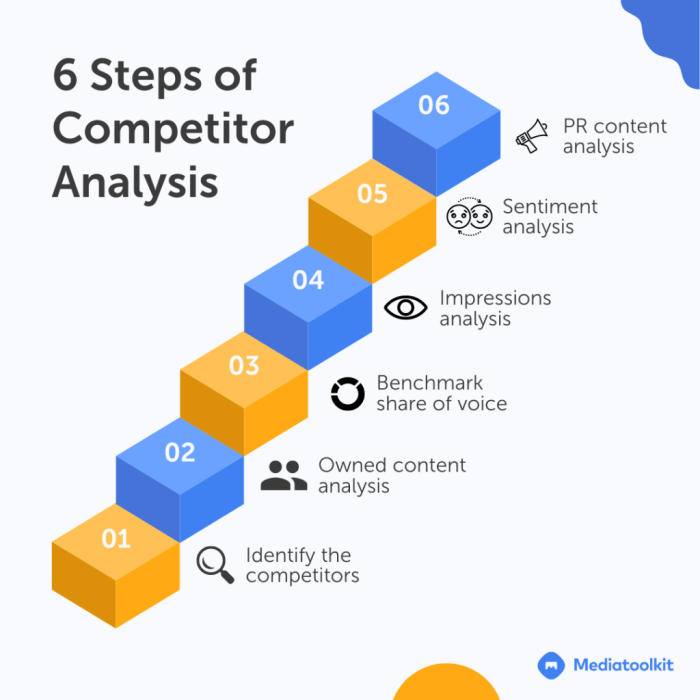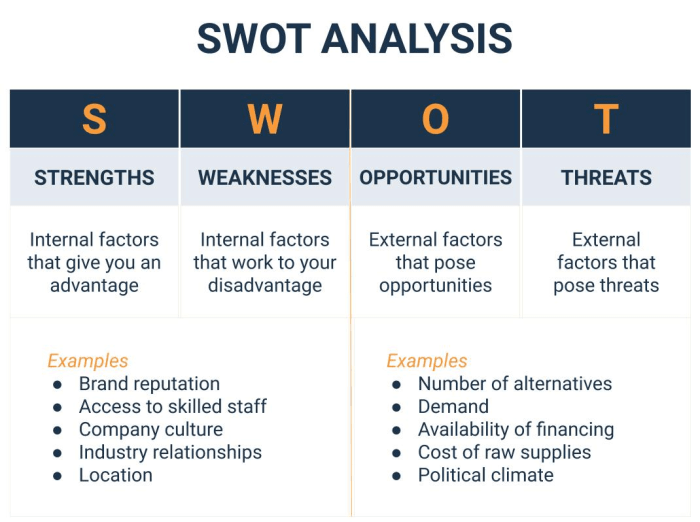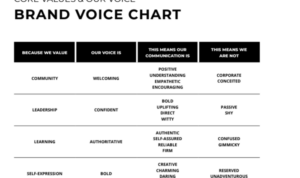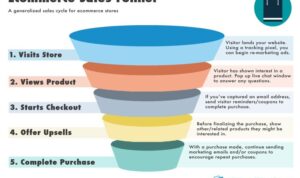Understanding Competitive Analysis takes center stage in the business world, offering a glimpse into the strategic tactics used by successful companies to stay ahead of the game. Get ready to dive into the world of market trends and competitor strategies with this engaging overview.
Exploring the steps, tools, and data interpretation involved in competitive analysis will reveal how businesses leverage information to make informed decisions and gain a competitive edge.
Importance of Competitive Analysis
In the fast-paced world of business, staying ahead of the competition is key to success. Competitive analysis plays a crucial role in helping companies understand their competitors, market trends, and consumer behavior. By analyzing the strengths and weaknesses of rival companies, businesses can develop effective strategies to differentiate themselves and attract more customers.
Identifying Market Trends
Competitive analysis helps businesses stay informed about the latest market trends and developments. By monitoring competitor activities, product launches, and customer feedback, companies can adjust their own offerings to meet changing consumer demands. For example, companies like Apple and Samsung constantly analyze each other’s product features and pricing strategies to stay competitive in the smartphone market.
Successful Companies Benefiting from Competitive Analysis
1. Nike: Through competitive analysis, Nike has been able to identify emerging trends in the sports apparel industry and adapt its marketing strategies accordingly. By closely monitoring competitors like Adidas and Under Armour, Nike has maintained its position as a market leader.
2. Coca-Cola: Coca-Cola conducts extensive competitive analysis to understand consumer preferences and market dynamics. This has helped the company introduce new products, such as healthier beverage options, to stay relevant in a changing industry landscape.
3. Amazon: Amazon’s success can be attributed in part to its thorough competitive analysis approach. By studying the pricing, shipping, and customer service strategies of rivals like Walmart and Target, Amazon has been able to continuously improve its own services and maintain its dominance in the e-commerce sector.
Conducting Competitive Analysis

When it comes to conducting a competitive analysis, there are several key steps involved in gathering and analyzing information about your competitors. By following these steps and utilizing the right tools and techniques, you can gain valuable insights that will help you make informed business decisions.
Steps Involved in Conducting Competitive Analysis
- Identify Your Competitors: Begin by identifying who your main competitors are in the market.
- Gather Information: Collect data on your competitors’ products, pricing, marketing strategies, and target audience.
- Analyze Strengths and Weaknesses: Evaluate your competitors’ strengths and weaknesses to identify areas where you can outperform them.
- Monitor Market Trends: Stay updated on industry trends and changes that may impact your competitive landscape.
- Develop Strategies: Use the insights gained from your analysis to develop strategies to stay ahead of the competition.
Tools and Techniques Used for Competitive Analysis
- SWOT Analysis: Assess the strengths, weaknesses, opportunities, and threats of your competitors.
- Market Research: Conduct surveys, interviews, and focus groups to gather data on competitors and market trends.
- Competitor Benchmarking: Compare your performance metrics with those of your competitors to identify areas for improvement.
- Online Tools: Utilize online tools like SEMrush, Ahrefs, and SimilarWeb to track competitors’ online presence and performance.
Tips on How to Gather Information About Competitors Effectively
- Monitor Social Media: Keep an eye on your competitors’ social media activity to understand their engagement with customers.
- Attend Industry Events: Network with industry professionals and gather insights on your competitors’ strategies and developments.
- Subscribe to Industry Publications: Stay informed about industry news and updates that may impact your competitive landscape.
- Utilize Google Alerts: Set up alerts for your competitors’ names and products to receive real-time updates on their activities.
Understanding Competitor Strategies: Understanding Competitive Analysis
In the competitive business landscape, it is crucial to understand the strategies employed by your competitors. By analyzing these strategies, companies can gain valuable insights that can influence their decision-making process.
Common Strategies Used by Competitors, Understanding Competitive Analysis
- Price Competition: Some competitors may choose to engage in price wars to attract customers by offering lower prices.
- Product Differentiation: Others may focus on creating unique products or services to stand out in the market.
- Market Segmentation: Competitors might target specific customer segments to tailor their marketing strategies accordingly.
Comparing and Contrasting Different Approaches
- SWOT Analysis: Some companies use SWOT analysis to identify their strengths, weaknesses, opportunities, and threats in comparison to their competitors.
- Porter’s Five Forces: This framework helps compare the competitive forces within an industry to understand the overall attractiveness and profitability.
- Competitor Benchmarking: Companies may benchmark their performance against direct competitors to identify areas of improvement.
Influencing Decision-Making
- Strategic Planning: Understanding competitor strategies can help companies develop more effective strategic plans to stay ahead in the market.
- Marketing Campaigns: By analyzing competitor tactics, businesses can fine-tune their marketing campaigns to better target customers.
- New Product Development: Insights into competitor strategies can guide companies in developing innovative products that meet consumer demands.
Interpreting Competitive Data
In competitive analysis, interpreting data accurately is crucial for making informed business decisions and gaining a competitive edge in the market. By understanding and analyzing key data points related to your competitors, you can uncover valuable insights that can help you refine your strategies and tactics.
Key Data Points to Consider
- Market Share: Understanding the market share of your competitors can give you an idea of their position in the industry and their relative strength.
- Pricing Strategies: Analyzing the pricing strategies of competitors can help you determine how competitive their pricing is compared to yours.
- Product Offerings: Examining the product offerings of competitors can reveal gaps in the market or potential areas for differentiation.
- Customer Reviews: Looking at customer reviews and feedback on competitors’ products or services can provide insights into customer satisfaction and areas for improvement.
Drawing Actionable Insights
Once you have gathered and analyzed the relevant competitive data, it’s important to draw actionable insights that can guide your decision-making process. Here are some ways to do that:
- Identify Strengths and Weaknesses: By comparing your own strengths and weaknesses to those of your competitors, you can uncover opportunities for improvement and areas where you have a competitive advantage.
- Spot Trends: Analyzing trends in your competitors’ data can help you anticipate market shifts and adjust your strategies accordingly.
- Set Benchmarks: Use competitive data to set benchmarks for your own performance and track progress over time.
- Adapt and Innovate: Use insights from competitive data to adapt your strategies, innovate new products or services, and stay ahead of the competition.
Competitive Analysis Tools

In the world of competitive analysis, having the right tools can make all the difference. Let’s explore some popular tools used for competitive analysis and the importance of leveraging technology in this process.
SEMrush
- SEMrush is a comprehensive tool that provides insights into competitors’ online marketing strategies.
- It offers features such as research, backlink analysis, and advertising research.
- SEMrush allows users to track competitors’ website traffic and analyze their social media presence.
Ahrefs
- Ahrefs is known for its backlink analysis and research capabilities.
- Users can uncover their competitors’ top-performing content and identify opportunities for their own website.
- With Ahrefs, you can track organic search rankings and monitor changes in your competitors’ online visibility.
SpyFu
- SpyFu specializes in competitor research and PPC ad insights.
- Users can see which s their competitors are targeting and how their ad campaigns are performing.
- SpyFu also provides historical data on competitors’ online marketing efforts for strategic analysis.
Moz Pro
- Moz Pro offers a suite of tools for competitive analysis, including site audits and rank tracking.
- Users can compare their website performance against competitors and identify areas for improvement.
- Moz Pro also provides insights into competitors’ link profiles and on-page optimization strategies.
Importance of Leveraging Technology
Utilizing competitive analysis tools not only saves time but also provides valuable insights that can inform strategic decisions. By leveraging technology, businesses can stay ahead of the competition, identify new opportunities, and fine-tune their marketing strategies for optimal results.





